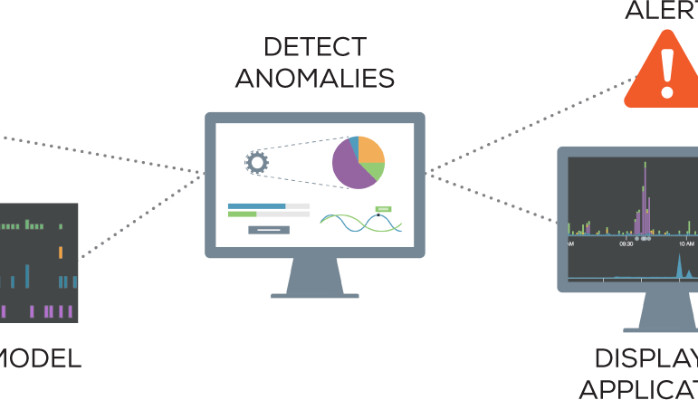In the ever-evolving landscape of machine learning and artificial intelligence (AI), the importance of MLOps, or Machine Learning Operations, cannot be overstated. Ensuring machine learning models operate effectively and efficiently in real-world scenarios is critical. One of the aspects of Machine Learning Operations is real-time model monitoring and anomaly detection, which enables organizations to maintain the performance and reliability of their AI systems. Delve into the advanced aspects of Machine Learning Operations, focusing on the role of AI in real-time model monitoring and anomaly detection.
Harmonizing Machine Learning and IT: The Essence of Machine Learning Operations
In Machine Learning Operations, the convergence of machine learning and traditional IT operations aims to streamline and systematize the end-to-end ML lifecycle. As AI applications permeate diverse sectors, it’s not just about creating sophisticated models but ensuring smooth deployment, maintenance, and evolution in production environments. Machine Learning Operations bridges the gap between the rapid experimentation of data science and the structured world of IT operations. Through robust Machine Learning Operations practices, organizations achieve faster iterations, reproducibility, and traceability in their AI solutions, ensuring that models are theoretically sound, technically viable and efficient in real-world scenarios. Delve further and explore how AI is becoming integral to Machine Learning Operations, particularly in real-time model monitoring and anomaly detection.
The Need for Real-time Model Monitoring
In today’s dynamic digital era, AI models serve myriad applications, ranging from recommendation systems to intricate fraud detection mechanisms. As these models process vast amounts of data, they must consistently deliver reliable and precise outcomes. However, with evolving data landscapes and shifting user behaviors, these models can experience drift, leading to a gradual decline in their performance. Hence, real-time model monitoring becomes paramount. This continuous oversight ensures early detection of potential discrepancies, allowing for swift interventions and adjustments, thereby preserving the model’s efficacy and trustworthiness.

Leveraging AI for Real-time Monitoring
Traditional methods of model monitoring involve setting predefined thresholds for metrics such as accuracy or error rate. When a model’s performance deviates beyond these thresholds, alerts are triggered. However, this approach has limitations, as it may not catch subtle issues or adapt to evolving data distributions. This is where AI comes into play. AI-powered MLOps solutions utilize machine learning algorithms to continuously analyze model behavior and data patterns. These systems can detect anomalies based on predefined thresholds, learn from historical data, and identify deviations from expected patterns. This adaptive approach enhances the ability to identify subtle issues early on.
The Role of AI in Anomaly Detection

Anomaly detection is a pivotal component of real-time model monitoring, especially in complex environments. AI-driven anomaly detection algorithms can identify unexpected deviations in model input data, model outputs, or the model’s intricate internal state. Discerning between genuine issues and short-lived temporary fluctuations substantially reduces false alarms, thereby preventing unnecessary panic and alert fatigue. Moreover, with continuous learning, AI models can be trained to recognize and adapt to new anomalies, even those unforeseen or not initially considered during the model’s deployment phase. This adaptability is invaluable, ensuring resilience in addressing emerging threats or unforeseen challenges that may arise as the environment evolves or transforms.
Continuous Learning and Model Improvement
One of the most powerful aspects of integrating AI into real-time model monitoring is its ability to facilitate continuous learning and model improvement. As the system monitoring detects anomalies and issues in model performance, it can automatically trigger retraining processes to update the model. This helps maintain model accuracy and ensures that the model remains relevant in a dynamic environment. Additionally, AI can assist in identifying the root causes of anomalies. It can analyse vast datasets to pinpoint whether issues related to data source changes, data quality, or the model itself. This level of insight enables organizations to take targeted corrective actions.
Challenges and Considerations in AI-driven Monitoring
While AI-powered model monitoring presents significant advantages, it’s essential to recognize the challenges and considerations inherent to its deployment. Implementing AI-driven monitoring requires careful calibration to avoid over-sensitivity or lack of responsiveness. If set too aggressively, the system might flood operators with false positives, while a lenient system may miss critical anomalies. Additionally, the interpretability of AI models remains a concern. Understanding the rationale behind their detections and decisions becomes crucial as these models grow in complexity. With this clarity, organizations may be able to validate AI’s decisions or explain them to stakeholders.
Moreover, there is a need for continuous oversight to ensure that the AI itself does not drift from its intended purpose. Regular evaluations and human-in-the-loop interventions are crucial to balance automated monitoring and human expertise. This integrated approach ensures that while AI is leveraged for its scalability and precision, human intuition and judgment remain at the core of MLOps, guiding and refining the process.
Conclusion
In MLOps, real-time model monitoring and anomaly detection are pivotal for ensuring the ongoing effectiveness of machine learning models. AI has emerged as a game-changer in this domain, enabling organizations to monitor models with greater accuracy, adaptability, and efficiency. By leveraging AI-driven monitoring systems, organizations can proactively address issues, maintain model performance, and continually improve their AI solutions. As AI continues to advance, it is clear that its role in Machine Learning Operations will become increasingly critical, ushering in a new era of reliability and effectiveness in deploying AI models. As organizations embrace these advanced Machine Learning Operations practices, they will be better positioned to harness the full potential of AI in real-world applications.
- What is the F-1 measure and why is it useful for imbalanced class problems?
- From Data Streams to Decentralized Worlds: Exploring the Role of Blockchain Subgraphs in Gaming Infrastructure
- How to predict customer churn using machine learning, data science and survival analysis
- Business models in data science and AI

